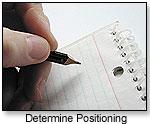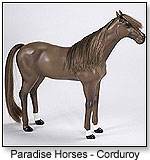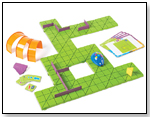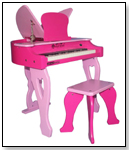|
|
Branding Toys: The Position How a Clear Position Defines Success
THE 4Ps: POSITIONING  Positioning incorporates all the other components of the 4 Ps — personality, perception and promise. Positioning tells buyers what you are selling and to whom. Positioning incorporates all the other components of the 4 Ps — personality, perception and promise. Positioning tells buyers what you are selling and to whom.To define your positioning, think about your products from a consumer’s perspective: Does he or she care more that your toys have articulated joints or that they are posable? Translating attributes to benefits sparks an emotional connection — and an impulse to buy. Clear positioning should provide a long-term plan for company and product growth, so look back to original goals to determine how to move ahead. A constant umbrella positioning — the overall positioning statement that holds true for the entire company — offers a barometer for new product development. Does the product fit within your current catalog? Is it something consumers will logically connect to the company? Would it be beneficial to create a new brand to promote it? By knowing your company’s positioning — how consumers perceive you — you have a clear guidebook for how to move forward. CASE OF A CLEAR POSITION When we met Paradise Horses™, a manufacturer of posable toy horses, its toys were in production, and the logo, packaging and branding were being developed. The company could have, like its largest competitors, positioned itself as a collectibles company targeting older children and adults. Or, it could have adopted a low-cost position, pitting itself against the competition.
PERSONALITY IN ACTION What makes a good positioning statement? Personality combined with simplicity and clarity make your message memorable. Always make sure your positioning contains four crucial components: Market Category. What do your biggest competitors do? That is your market category. Few companies have the time and budget to create a market category from scratch. So, put yourself in an existing category and avoid the temptation to be creative. The more straightforward you are with your description, the more easily a consumer will relate. Consumers buy what they know and understand.  Product Offering. What do you sell? If it’s one product, tell buyers what it is. If you sell an entire line, find a descriptor that most easily incorporates the group — educational games or developmental toys, for instance. Product Offering. What do you sell? If it’s one product, tell buyers what it is. If you sell an entire line, find a descriptor that most easily incorporates the group — educational games or developmental toys, for instance. Target Audience. To whom do you sell? The more specific your target audience, the more specific your positioning and messaging. If you know exactly to whom you are speaking, you will be more aware of what they need. Do you have more than one target audience? Keeping your umbrella positioning consistent, “tweak” your message for each audience so it is getting what it wants. Differentiation. A product’s point of differentiation can be determined by these questions: Is there a distinct attribute that makes your toy better than the competition? Is there a marked benefit that only your product can claim? Is your product targeted toward a certain group of children? And lastly, is there a creative application beyond the play factor that makes your product distinctive? Think about differentiation from multiple perspectives and select the most compelling and clear-cut position. With the basics of positioning and promise under your belt, building a brand that has both accuracy and longevity is within reach. In the coming months, we’ll look toward the remaining two Ps, personality and perception, to round out the equation. Read more about what Flom has to say about Promise, Personality [coming shortly] and Perception [coming shortly].   Writer's Bio: As a managing partner and co-founder of Flag + Company, Beth has branded, defined, re-defined, and marketed organizations of all sizes and sectors. Prior to founding Flag, Beth served as a senior director at The Delve Group, a strategic branding firm focused on the business-to-business sector, and creative director at D2 Creative, where she established a traditional marketing and strategy division within an interactive agency. Read more about her company at www.flagandco.com. Read more articles by this author Writer's Bio: As a managing partner and co-founder of Flag + Company, Beth has branded, defined, re-defined, and marketed organizations of all sizes and sectors. Prior to founding Flag, Beth served as a senior director at The Delve Group, a strategic branding firm focused on the business-to-business sector, and creative director at D2 Creative, where she established a traditional marketing and strategy division within an interactive agency. Read more about her company at www.flagandco.com. Read more articles by this author |
| ||||||||||||||||||||||||||||||||||
Disclaimer Privacy Policy Career Opportunities
Use of this site constitutes acceptance of our Terms of Use.
© Copyright 2025 PlayZak®, a division of ToyDirectory.com®, Inc.



